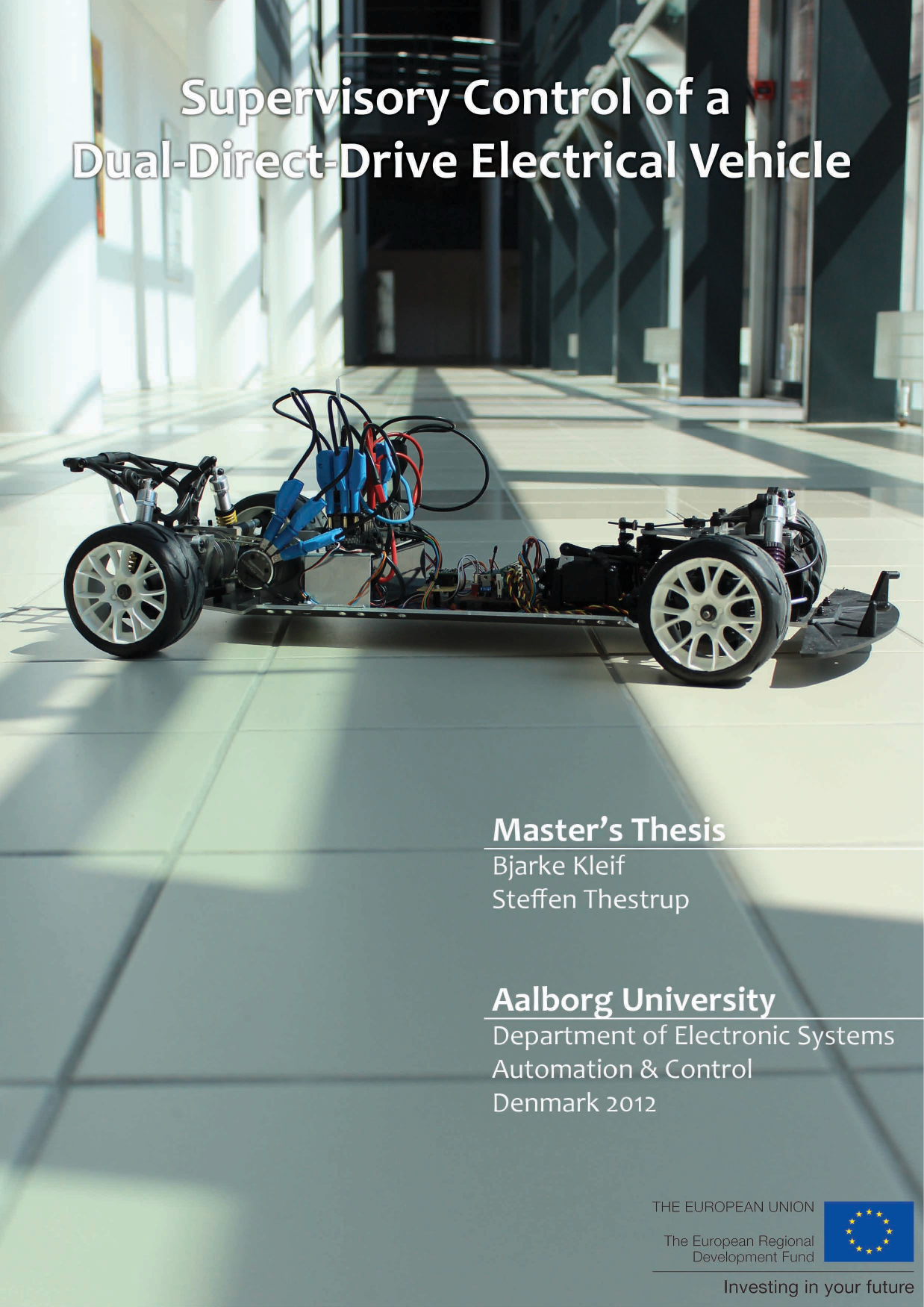
Supervisory Control of a Dual-Direct-Drive Electrical Vehicle
Translated title
Authors
Term
10. term
Publication year
2012
Submitted on
2012-05-30
Pages
249
Abstract
As part of an electric vehicle research project this MSc thesis investigated fully- and semi-autonomous control strategies to be implemented on a modified 1:5 scaled RC car with electric motors powering each rear wheel. The powertrains were powered by BLDC motors which were controlled by prefabricated motor controllers. System identification revealed a linear input/output relationship and the motors were therefore modelled as DC motors. It was desired to control the output torques and therefore PI control with torque feedback was implemented on each powertrain. A vehicle simulation platform was developed in Simulink R using the full car lumped mass model approach. Wheel traction forces were modelled using general formula found in automotive literature, in particular the magic formula was used for longitudinal traction forces. An automatic test procedure controller was derived which consisted of a yaw-rate and speed controller. The yaw-rate controller was developed using feedback linearization with linear PI control and the speed controller was developed using wheel speed feedback with PI control. A semi-autonomous DFA supervisor switched between control algorithms according to the driving situation. Different strategies to dispatch torque were investigated. One dispatcher which assisted the driver in taking the desired turn showed promising results, and could prove more effective than an open differential. State estimation of yaw-rate, vehicle velocity, road incline and longitudinal wheel slip was performed and implemented in the simulation platform and on the RC platform. Furthermore a novel approach for torque estimation on BLDC motors was presented using two phase currents and HES, which showed promising results compared to other more hardware requiring methods. Stability of all controllers was shown under the assumption of vanishing perturbations. Individual- and integration tests in the simulation platform revealed good performance of all controllers derived. Moreover, traction control was implemented on the RC platform and the proposed method was verified.
